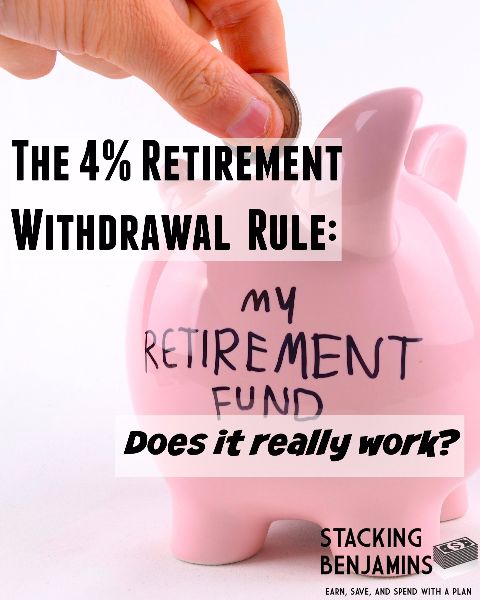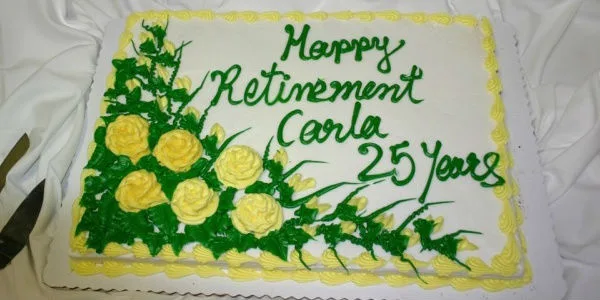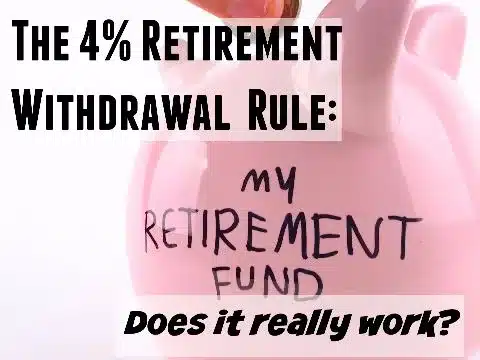
A recent Forbes article highlighted a survey of retirees that showed that rather than taking out a consistent 4% from their retirement funds, those surveyed either took out larger chunks or little to nothing from their retirement accounts.
According to this article, many didn’t take from their retirement accounts for fear that they might outlive their money while the people who took out chunks of money typically did it for one time expenses that could be good or bad.
Is The 4% Rule Baloney?
While the “rule” can work if you do the math….I think the larger point for people to understand is that retirement scenarios are unique. Financial advisors try to give their clients guidance as to what retirement can and will look like; however, very few people fall into a neat 4% withdrawal box.
Just think about your budget now, do you spend exactly the same amount of money every month of every year and the same amount every single year? Of course not! We’re not robots with crystal balls.

Planning Retirement Income Is Harder Than a Rule of Thumb
It’s always a struggle advising clients around retirement, no matter how much I run models and scenarios, because the human factor is very difficult to predict. Some clients significantly pull back their lifestyles in retirement to the point that they actually save more in retirement than they did leading up to it. On the other end of the spectrum, I’ve been alarmed when I have seen other clients adapt a YOLO attitude when they retire and want to spend every last penny they worked for 40+ years to build in a lot less time.
How’s a future retiree to plan?
First, understand your overall relationship with money, and how it impacts your lifestyle. When clients ask me when they can retire, my response is always “As soon as you are ready!” After they look at me funny for a little bit, I explain to them that the sooner they get control of their finances, the sooner they will get to retirement.
Demonstrate your capacity to live within specific income targets over a period of time before pulling the trigger on retirement. It’s hard to live in a straight-line 4% bubble; however, if you can live in a pretty predictable range for a period of time, that’s just as good to me. If your annual expenditures are as unpredictable as stock analyst recommendations, then navigating your retirement funds will be a struggle.
If you would like to retire comfortably sooner than later, start challenging yourself to live within an income range NOW. If you currently make more than that range, then anything you don’t spend will add to your savings, getting you to retirement even faster. If you can’t successfully negotiate your lifestyle to a lower range, then you need to start figuring out why you have control issues and start fixing those issues.
There are so many unpredictable variables around retirement like your health, your longevity, and your family situation; however, the sooner you can control the predictable areas of your lifestyle like rent, food costs, discretionary spending, the more flexibility you give your retirement savings to manage through unpredictable moments.
My Final Verdict on the 4% Rule
So if you’re thinking, “That’s WAY harder than just using the 4% rule!” My answer would be, yes, my solution sucks because I don’t give clients a handy 4% rule of thumb; I force them to undergo a money journey to discover their own retirement truth. As this study illustrated, though, the 4% rule isn’t even a reality for present day retirees. You have to discover a lifestyle that works for you and then work your money around that lifestyle.
Do you know what your retirement lifestyle will look like? How much do you think you need to retire? Do you think the 4% rule of thumb should be replaced?
Photo: grantlairdjr


No, it shouldn’t be replaced. It’s a planning tool, not a distribution rule. Where people go wrong is they fail to understand the limits of the original “trinity” study. And that the study itself allowed for a failure rate. Every retiree should have 2 budgets – bare bones and an ideal spending. I’d put the bare bones at 2-3% of portfolio withdrawal per year. and the rest should be discretionary, and go out the window if it has to.
I think we are saying the same thing, except on getting rid of the “rule.”